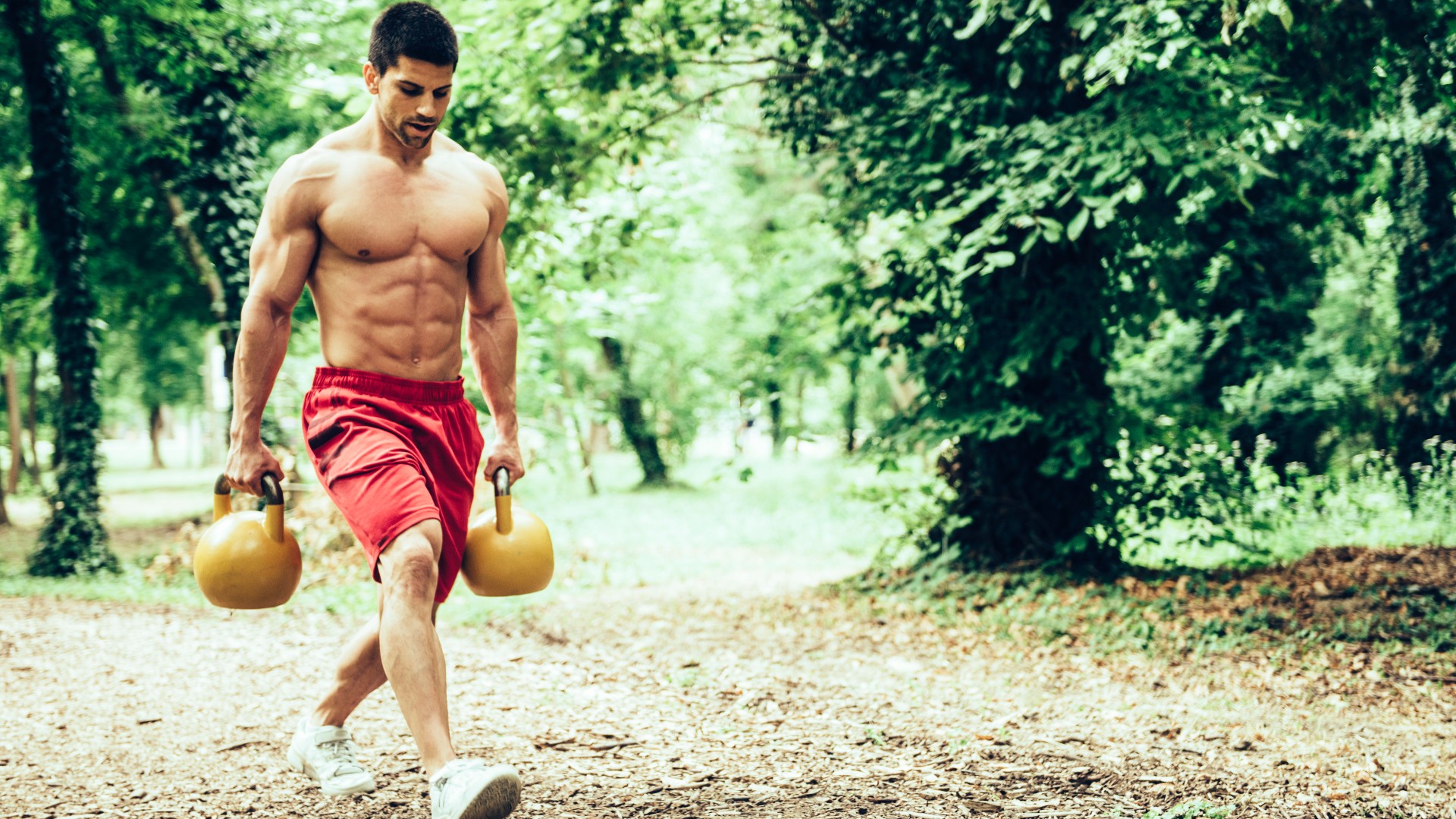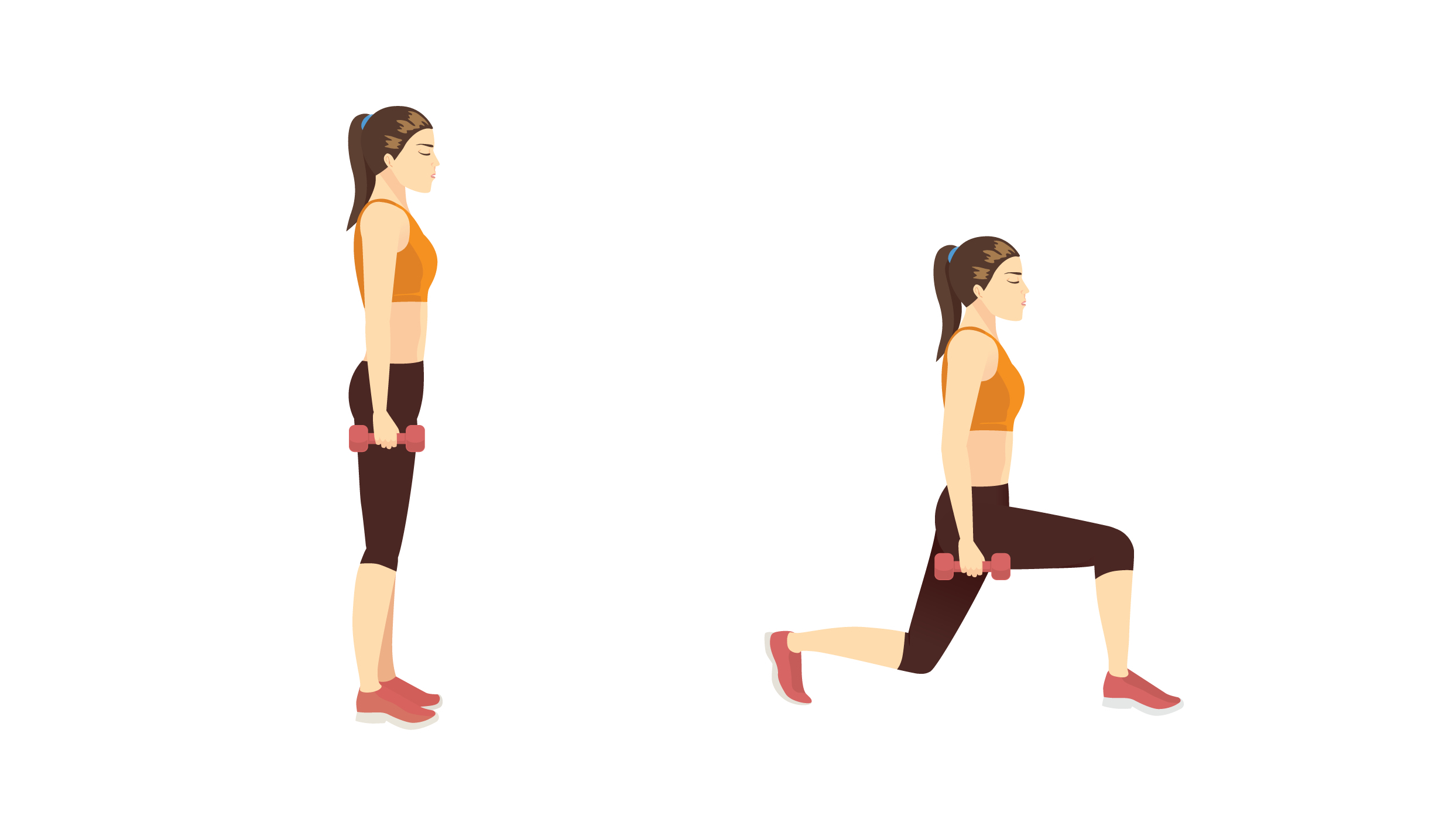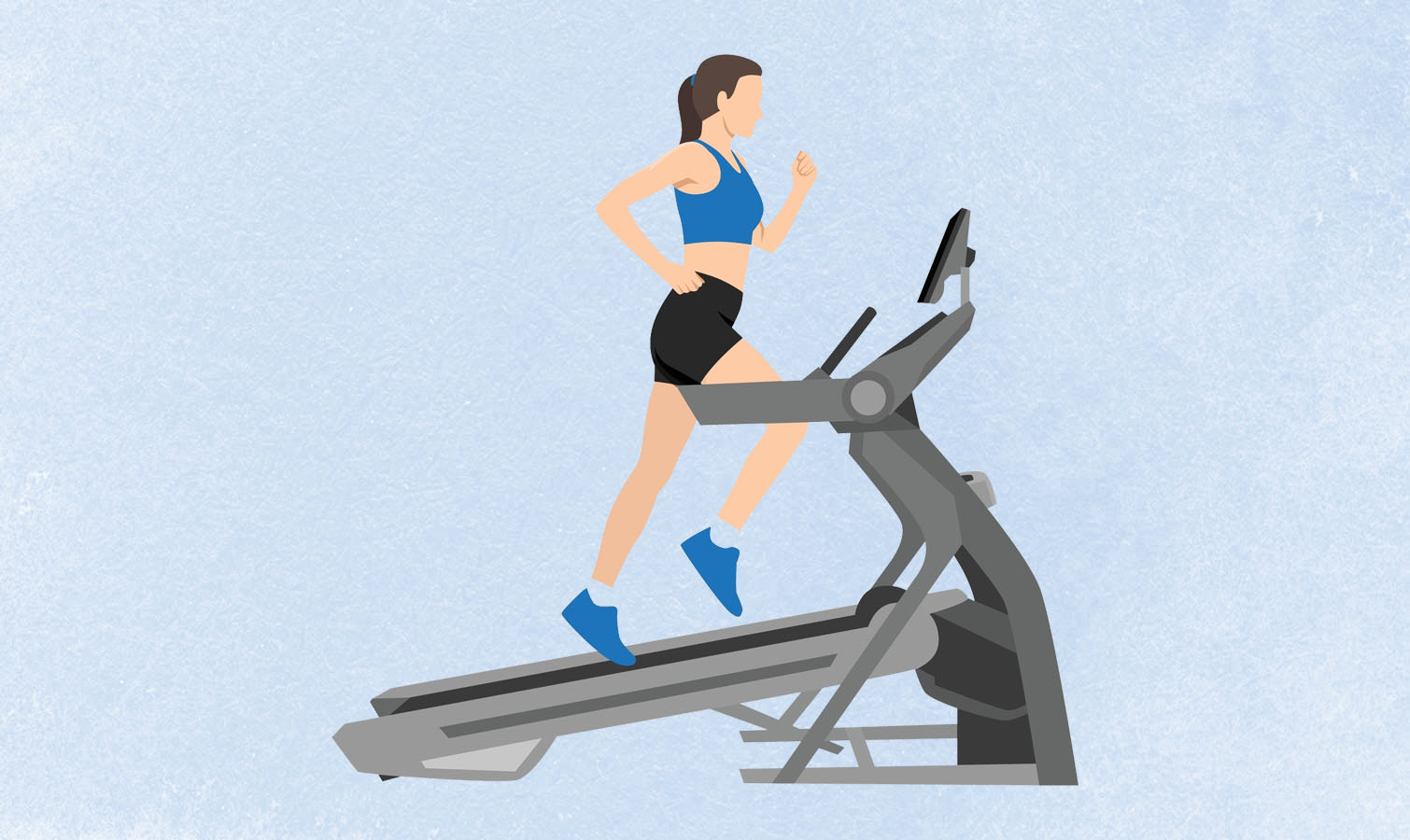
Walking workouts are not to be sniffed at; these full-body routines can build stronger muscles, joints and bones while increasing your metabolism and improving cardiovascular fitness. The next time you have a spare 25 minutes but not enough time for the gym, give this three-move walking kettlebell workout a try.
I recommend one of the best kettlebells from our TG collection, as we pride ourselves on only using bells that offer a secure grip and comfort during weightlifting. And remember this: researchers have found that pace matters more than steps for walking benefits, so adding some speed could help you see better results over time.
Here’s how to do the 25-minute weighted walking workout, along with its benefits.
What are the exercises?
First, let’s look at the three moves you’ll be performing.
1. Kettlebell farmer's walk
If you’ve ever gotten carried away with your groceries, then had to walk them home gripped tightly in shaking hands, then you're already familiar with this killer kettlebell exercise.
The farmer’s walk, or farmer’s carry, is a full-body exercise that works your legs, core, arms and shoulders as you carry one or two heavy weights by your sides as you walk.
If you’ve ever gotten carried away with your groceries, then had to walk them home gripped tightly in shaking hands, then you're already familiar with this killer kettlebell exercise. By adding pace to this move, you can combine strength and conditioning to build endurance and ramp up your heart rate.
I love the farmer’s walk because it’s both functional and a compound exercise, which means it mimics daily activities like carrying something heavy while also targeting multiple major muscle groups. Either hold two weights by your sides or challenge balance and stability by working single-sided.
Get instant access to breaking news, the hottest reviews, great deals and helpful tips.
Another lesser-known benefit of the farmer’s carry is that it improves your forearm and grip strength, which is a key indicator of longevity. Research has shown that the farmer’s walk could be an ‘effective lifting alternative to the deadlift’ because it puts less stress on back muscles and offers similar activation.
- Learn how to do the farmer’s walk step-by-step.
2. Kettlebell walking lunges

Walking lunges strengthen your glutes and legs, but they also test stability and balance. You can walk with your kettlebells by your sides, or challenge your upper body and core muscles by front racking the weights onto your shoulders, drawing your elbows forward to create a shelf.
Aim to tap your back knee to the floor with every rep, and focus on stepping far forward enough that you can properly bend your back knee. Keep your torso upright; a slight hinge forward at your hips will help you activate those pesky gluteal muscles, so that your butt gets more of a workout.
Try to find rhythm and pace with your lunges to increase your heart rate, and wait for the dreaded leg burn that’s sure to come.
3. Kettlebell incline walk

I’m deliberately being vague about what “incline” means because it depends on what you have available to you. I like to use a steep hill or a staircase, but you could even use a treadmill if you try this routine in the gym.
Focus on walking with both weights by your sides or racked onto your shoulders, then walk uphill. Keep your back straight and walk at a challenging pace, aiming to reach around a 7-8/10 in perceived effort, known as RPE.
Again, a slight lean forward at the hips (without rounding your back) will engage your glutes more; the uphill climb will work more of your back body, including your hamstrings and lower back, so be sure to brace your stomach as you walk to keep your core engaged and your back safe.
What is the workout?
Set a timer for 25 minutes, then complete this EMOM (Every Minute On the Minute):
- Minute 1: Walk a set distance for your kettlebell walk
- Minute 2: Lunge a set distance for your kettlebell lunges
- Minute 3: Walk a set distance for your incline walk.
For the first minute, walk for 45 to 50 seconds, then rest. In the next minute, perform walking lunges for 45 to 50 seconds, then rest. On minute three, do the same for your incline walk (you can include walking back down in your rest or as part of your workout).
Now, here’s where it gets spicy. Repeat for another eight rounds, and every minute, try to match or beat your previous distance. For example, if you walk 100 meters during the kettlebell walk during the first minute, aim to maintain 100 meters each time you repeat this exercise.
Remember to pace yourself properly because fatigue will set in by round three, which means it will be harder to complete the same distance in the same time limit as your muscles tire. This is about building muscular endurance and consistency, so try to keep some energy in the tank for those final rounds.
Walking workout benefits
Walking with weights challenges postural stability, balance and control, and also requires your core muscles to work to protect your pelvis and spine while contributing to safe movement mechanics.
If you have limited equipment, you can still benefit from a challenging full-body workout simply by grasping one or two weights and heading out for a walk. I would opt for a medium-heavy weight if you can, but even a rucksack (did you know rucking is trending?) or water bottles work well for this type of routine.
More from Tom's Guide
Follow Tom's Guide on Google News and add us as a preferred source to get our up-to-date news, analysis, and reviews in your feeds. Make sure to click the Follow button!
- Forget running and swimming — study finds this sport adds 10 years to your life
- I thought power walking was weird — here's what happened when I tried it 30 minutes a day for one week
- No Weights Needed: Build Strength and Tone in Just 20 Minutes with This 5-Move Routine

Sam Hopes is a level 3 qualified trainer, a level 2 Reiki practitioner and fitness editor at Tom's Guide. She is also currently undertaking her Yoga For Athletes training course.
Sam has written for various fitness brands and websites over the years and has experience across brands at Future, such as Live Science, Fit&Well, Coach, and T3.
Having coached at fitness studios like F45 and Virgin Active and personal trained, Sam now primarily teaches outdoor bootcamps, bodyweight, calisthenics and kettlebells.
She also coaches mobility and flexibility classes several times a week and believes that true strength comes from a holistic approach to training your body.
Sam has completed two mixed doubles Hyrox competitions in London and the Netherlands and finished her first doubles attempt in 1:11.
You must confirm your public display name before commenting
Please logout and then login again, you will then be prompted to enter your display name.
